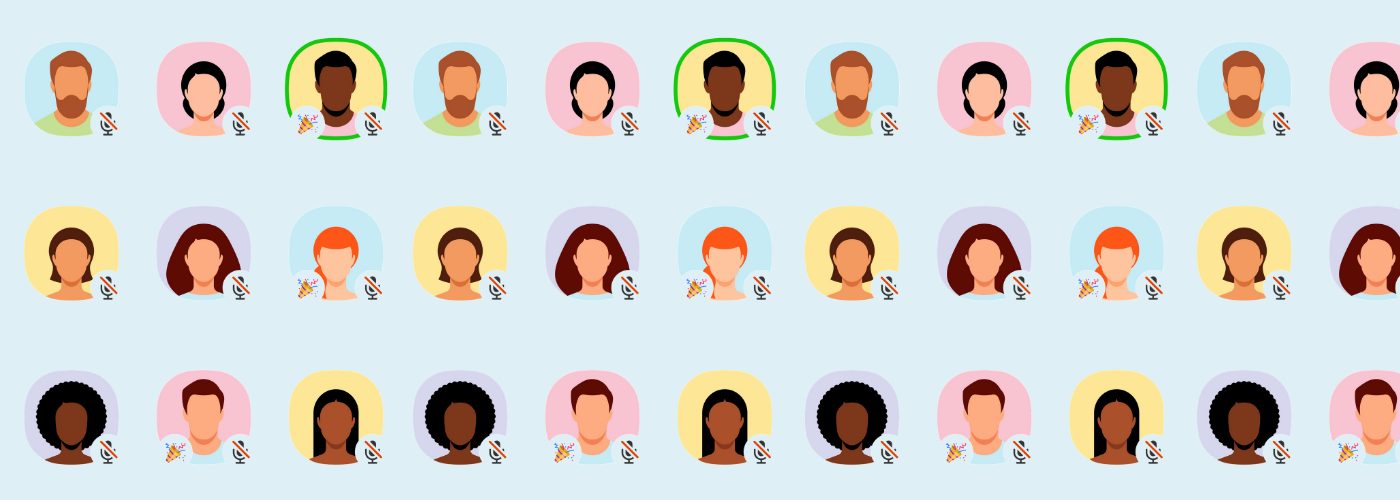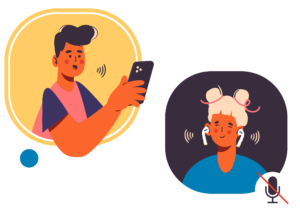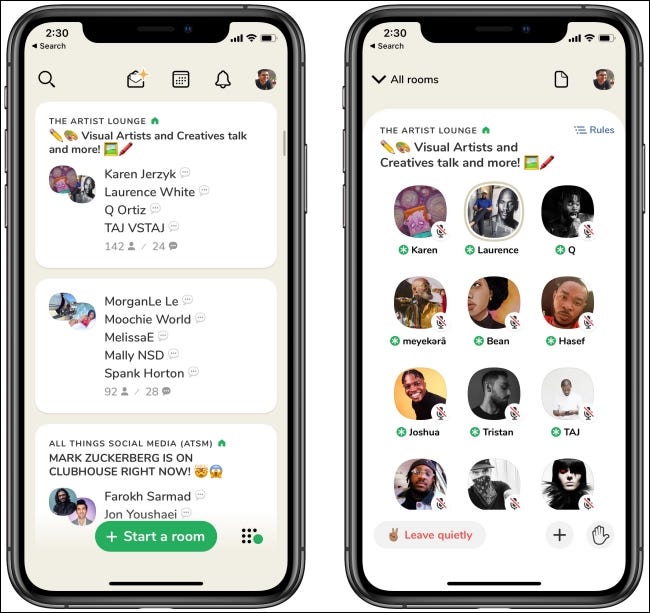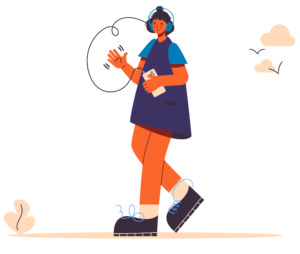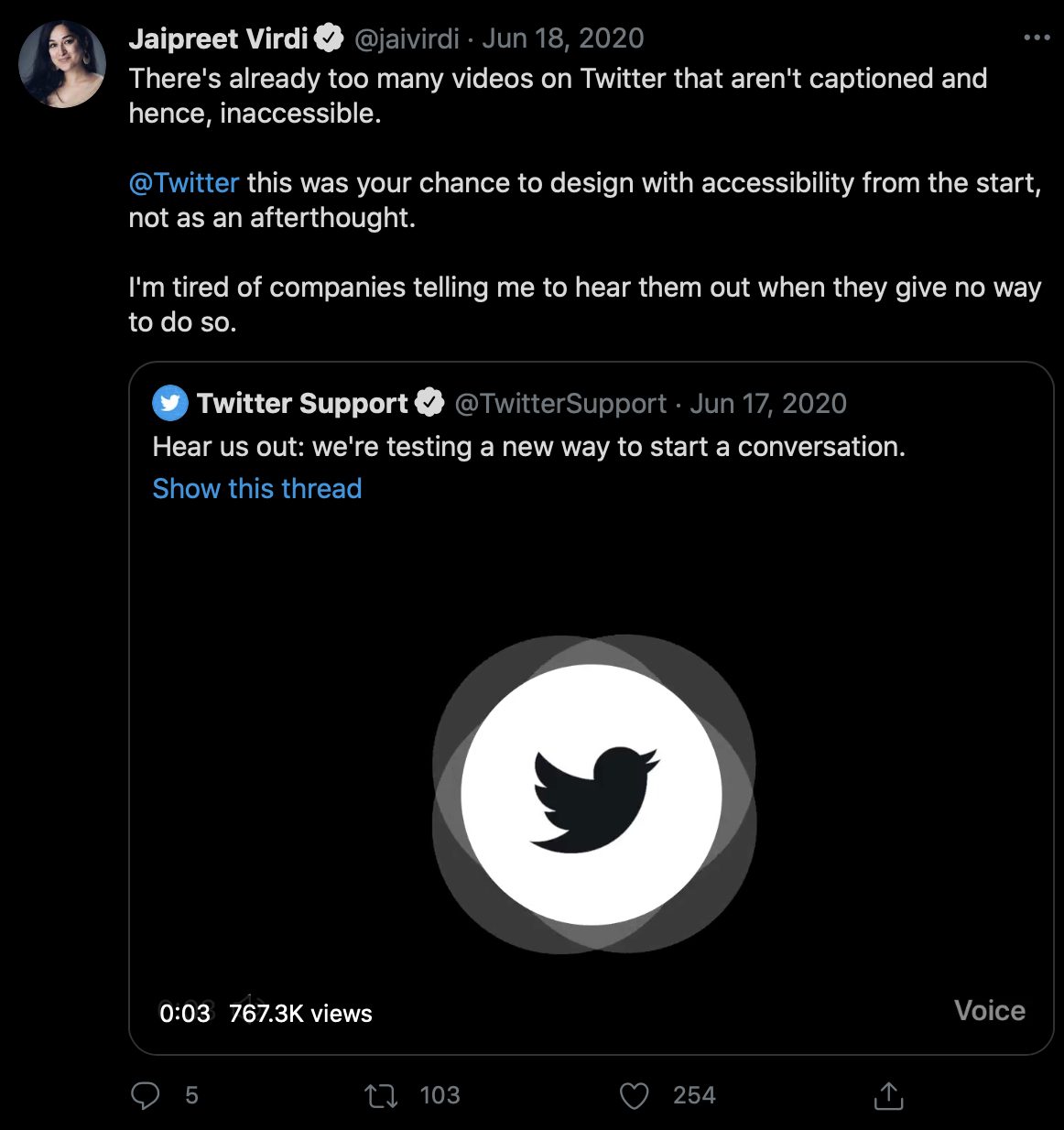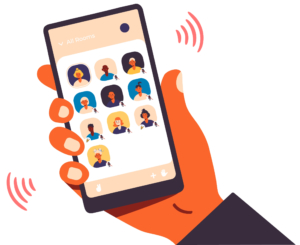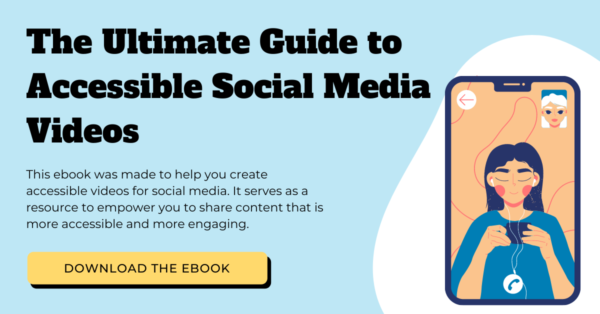What Clubhouse Means for Deaf and Hard of Hearing Users
Updated: October 23, 2023
Every so often, a new social media app hits the market and takes internet users by storm. Remember the days when everyone raced to create an account on Facebook, Instagram, or even more recently, TikTok? Whenever a new app launches and generates a significant amount of buzz, social media users jump on the bandwagon to see what the hype is all about.
The latest talk of the virtual town is Clubhouse, a drop-in audio social networking app that allows users to host, moderate, or join in on conversations.
It was created by Silicon Valley entrepreneurs, Paul Davidson and Rohan Seth, who set out to build “a new type of social network based on voice where people around the world come together to talk, listen and learn from each other in real-time.”
The new and exclusive social media platform has garnered a lot of attention, but many disability rights advocates criticize the app’s lack of accessibility – in particular for users with hearing loss.
So, what exactly does Clubhouse mean for people who are d/Deaf or hard of hearing? Let’s dive into the app’s features, the need to prioritize accessibility in the development process, and the benefit of accessibility for businesses.
Learn How to Make Your Social Media Content Accessible 📱
Is Clubhouse Too Exclusive?
Clubhouse is not like most social media platforms, which allow anyone with a device and internet connection to create an account.
The overwhelming majority of social media apps aim to attract a massive amount of users. Clubhouse is unique, in that it’s an invitation-based platform. This means that you can’t just go to the app store, download the app, sign up and start using it; you have to be invited by an active Clubhouse user.
Additionally, the new app is in beta, so it’s only available to iPhone users for now (sorry, Android users).
Upon receiving an invitation to join, the user is able to create an account. Before jumping into the action, the app will allow you to select a variety of topics that may be of interest to you such as parenting, health and nutrition, sports, music, and plenty more. Clubhouse will then customize the experience for you by recommending specific “rooms” and people to follow. A room is similar to a virtual conference call – think Zoom, but without the ability to use video.
When you join a room, you automatically enter as a muted audience member. In order to speak in the room, you must select the hand icon. It notifies the moderator that you’ve raised your hand. Then, the moderator has the ability to invite you on the virtual stage to speak.
Users have the ability to float in and out of different rooms and engage in a slew of conversations.
Image Courtesy of How to Geek
When Clubhouse launched in March of 2020, only a handful of users had access – including the likes of prominent celebrities, influencers, and tech giants. It even had Elon Musk, founder and CEO of Tesla and SpaceX, who made an appearance and broke Clubhouse’s room limit of more than 5,000 people.
As of January 2021, Clubhouse has over 2 million active users. Now compare that to other social media companies, like Facebook, which has amassed a user base of 2.8 billion people.
Clubhouse’s uber-exclusive nature has made it appealing to many social media users, but it excludes more than just people without an invitation and an iPhone; it also excludes people with hearing loss – who, despite meeting the requirements to register, aren’t able to engage in any of the conversations.
How Clubhouse Impacts Users with Hearing Loss
In a remote world where we’re constantly in Zoom meetings, Google Hangouts, or Slack calls for work, clubs and hobbies, or catching up with family and friends, the audio space seems like a great alternative.
Since March of 2020, we’ve relied on our devices to connect with others so much so that a new term, “Zoom fatigue” or “virtual fatigue”, was coined to explain the literal exhaustion and burnout one experiences after a video or conference call.
Clubhouse seemed like a solution to this problem – only needing to speak and/or listen in on conversations, as opposed to staring at your screen like other social media apps.
However, what seemed like good intentions turned out to be exclusionary to d/Deaf and hard of hearing users. Since the app relies solely on audio, it’s completely inaccessible to users with hearing loss.
Without a text alternative like live automatic captions, people with minimal to severe hearing loss cannot engage in conversations on Clubhouse.
Even transcripts wouldn’t be a completely useful alternative. A transcript is a written document that converts audio into text, which can certainly make the conversation accessible. Nonetheless, given that the point of the social networking app is to communicate with others in real-time, a transcript defeats the purpose. d/Deaf and hard of hearing users still won’t be able to participate in live conversations. Since the rooms and the conversations that happen within them get deleted permanently after it’s closed, there wouldn’t be a way to save the conversation to have them transcribed regardless.
The fact that Clubhouse excludes users with hearing loss is ironic, considering the fact that one of its core principles found in its community guidelines is to be inclusive. It promotes “tolerating, welcoming, and considering diverse people and perspectives”. Yet, it’s clear that users with disabilities were left out of this principle.
Unfortunately, digital ableism is all too commonplace in the tech world.
Digital ableism is when discrimination against people with disabilities takes place through apps, websites, and online services.
The fact of the matter is that in an increasingly digital world where virtual communication is more important than ever before, Clubhouse can’t afford to exclude users with disabilities.
Accessibility is a Priority, Not an Afterthought
When it comes to accessibility, it’s imperative that it’s considered early on in the design and development process.
“Baking-in accessibility” is a term commonly used by web accessibility advocates to indicate that technology is designed, developed, or otherwise acquired with the needs of people with disabilities in mind.
In other words, it means that content creators, designers, and developers are being proactive, rather than reactive, about accessibility.
It’s essential that the needs of people with disabilities are a part of the initial design, procurement, and development process, otherwise, you risk excluding them from participating with your technology.
Twitter released a feature in the spring of 2020 called Spaces, a similar concept to Clubhouse in that it’s built around the voices of people. The social media app known for its 140-character posts, also known as tweets, received a frenzy of backlash from members of the d/Deaf and hard of hearing community on Spaces’ inaccessibility.
One Twitter user called out the social media company, claiming that Twitter had the opportunity to design with accessibility from the start.
Taking into account that Clubhouse was launched well after the announcement of Twitter Spaces, it could’ve used it as a learning opportunity.
When accessibility is seen as an afterthought, it ignores the needs of the millions of people with disabilities and ultimately leads to a product or service that doesn’t serve all users.
Furthermore, inaccessibility ends up costing more time, money, and resources than when it’s considering from the very beginning of the process.
Watch The Webinar ➡️ What You Should Know About Social Media Accessibility!
Accessibility is Good for Business
Disabilities aren’t one-sided – they can be permanent, temporary, or situational and can affect everyone regardless of ability.
There’s even a growing global trend that the likelihood of disability is increasing. With an increasing life expectancy and a decreasing birth rate, this makes sense. The human population is getting older and with age, it increases the chances of having a disability.
We also have a population that is using and relying more on technology. As the population of people with disabilities continues to grow, we’ll see more of a demand for accessibility.
One billion people, or 15% of the world’s population, are living with a disability. That’s a significant number of users who can’t be ignored. A study by the Return on Disability Group, it uncovered that $1 trillion in annual disposable income exists from people with disabilities. That becomes a missed opportunity when businesses don’t invest in accessibility.
Beyond a profitability perspective, accessibility benefits everyone – not just people with disabilities. When technology is developed with a range of abilities, learning styles, and viewing preferences in mind, it positively impacts all users.
We’re living in a time when diversity and inclusion are core values consumers want to see represented in the brands they support. In fact, many of today’s consumers are rewarding brands that capture social equity. More than one-third of U.S. adults said they either “temporarily or permanently stopped supporting brands they felt did not represent them”.
The numbers don’t lie. Accessibility and digital inclusion aren’t just “nice-to-haves”. They positively impact businesses.
The Future of Clubhouse’s Accessibility
Clubhouse is still in beta, which means that there are likely many updates to come. As of now, there’s still no word yet on whether they’ll begin to work on accessibility improvements.
However, we’re hopeful that the developers of the newest social media craze will take into account the number of advocates who’ve shared constructive criticism on ways to make the app more accessible to people with a variety of disabilities, not just hearing loss.
In our digital world, social media companies need to treat accessibility as a requirement because it helps all of us feel included and stay connected.


